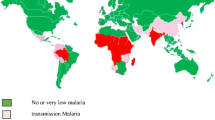Abstract
The dihydroartemisinin-derived dimer (DHA dimer) was synthesized, and its antimalarial activities were evaluated both in vitro and in vivo. The dimer IC50 value of 0.51 ± 0.12 nM in vitro was significantly lower than that of DHA at 1.81 ± 0.70 nM. The dimer ED50 values were 0.44 ± 0.03 and 0.18 ± 0.03 mg/(kg·day) in vivo for intragastric (i.g.) and intravenous (i.v.) groups, respectively, to Plasmodium yoelii rodent malaria. It also performed better relative to those of DHA which had ED50 values of 0.76 ± 0.03 mg/(kg·day) (i.g.) and 0.32 ± 0.03 mg/(kg·day) (i.v.). Moreover, the recrudescence rate, negative conversion rate, and cure rate of the dimer showed superior performance. Furthermore, the metabolites and major metabolic pathways of the dimer in rats were preliminarily investigated using the HPLC-HRMSn method. Twenty-seven metabolites, including DHA, 11 metabolites of DHA, and 15 other novel metabolites, were detected in rats after i.g. administration of dimer. The metabolic pathways of the 15 novel metabolites were inferred: deoxygenation, hydroxylation, and hydroxylation with dehydration.








Similar content being viewed by others
References
Barkan D, Ginsburg H, Golenser J (2000) Optimisation of flow cytometric measurement of parasitaemia in plasmodium-infected mice. Int J Parasitol 30:649–653
Beekman AC, Barentsen AR, Woerdenbag HJ, Uden WV, Pras N (1997) Stereochemistry-dependent cytotoxicity of some artemisinin derivatives. J Nat Prod 60:325–330
Cheng HF, Zhao Q, Gao J, Wang RL, Zhang SQ (2015) Assessment of antimalarial activity of choline derivatives against Plasmodium falciparum growth in vitro by SYBR green I method. Chin Parasitol Parasitol 33:196–199
Dai HL (2017) Synthesis, antimalarial activity and primary study on metabolism in vivo of dihydroartemisinin derived-dimer. Shanxi medical university, Thesis, p. 10–24
Dayrit FM (2018) From Artemisia annua L. to artemisinins: the discovery and development of artemisinins and antimalarial agents. Edited by YouYou Tu. ChemMedChem 13:124–125
Fredric MM, Michael JR (1997) Synthesis and reactivity of 5-fluorouracil/cytarabine mutual prodrugs. J Org Chem 62:9083–9088
Fröhlich T, Karagöz AC, Reiter C, Tsogoeva SB (2016) Artemisinin-derived dimers: potent antimalarial and anticancer agents. J Med Chem 59:7360–7388
Klayman DL (1985) Qinghaosu (artemisinin): an antimalarial drug from China. Science 228:1049–1055
Liu CX (2017) Discovery and development of artemisinin and related compounds. Chin Herb Med 9:101–114
Liu T (2012) Biotransformation and time-dependent pharmacokinetic studies of artemisinin antimalarials. Shandong university, Thesis, p. 61–71
Liu ZX, Wang XF, Li SM, Li X, Xue CF, Miao J (2004) Effect of sodium citrate based anticoagulants on the growth activity of malaria parasites. Chin J Parasitol & Parasit Dis 22:344–348
O’Neill PM, Amewu RK, Charman SA, Sabbani S, Gnädig NF, Straimer J, Fidock DA, Shore ER, Roberts NL, Wong MHL, Hong WD, Pidathala C, Riley C, Murphy B, Aljayyoussi G, Gamo FJ, Sanz L, Rodrigues J, Cortes CG, Herreros E, Angulo-Barturén I, Jiménez-Díaz MB, Bazaga SF, Martínez-Martínez MS, Campo B, Sharma R, Ryan E, Shackleford DM, Campbell S, Smith DA, Wirjanata G, Noviyanti R, Price RN, Marfurt J, Palmer MJ, Copple IM, Mercer AE, Ruecker A, Delves MJ, Sinden RE, Siegl P, Davies J, Rochford R, Kocken CHM, Zeeman AM, Nixon GL, Biagini GA, Ward SA (2017) A tetraoxane-based antimalarial drug candidate that overcomes pfk13-c580y dependent artemisinin resistance. Nat Commun 8:15159
Posner GH, Chang HO (2002) Regiospecifically oxygen-18 labeled 1,2,4-trioxane: a simple chemical model system to probe the mechanism(s) for the antimalarial activity of artemisinin (qinghaosu). J Am Chem Soc 114:8328–8329
Prabhu P, Suryavanshi S, Pathak S, Patra A, Sharma S, Patravale V (2016a) Nanostructured lipid carriers of artemether-lumefantrine combination for intravenous therapy of cerebral malaria. Int J Pharm 513:504–517
Prabhu P, Suryavanshi S, Pathak S, Sharma S, Patravale V (2016b) Artemether–lumefantrine nanostructured lipid carriers for oral malaria therapy: enhanced efficacy at reduced dose and dosing frequency. Int J Pharm 511:473–487
Shen S, Liu SZ, Zhang YS, Du MB, Liang AH, Song LH, Ye ZG (2015) Compound antimalarial ethosomal cataplasm: preparation, evaluation, and mechanism of penetration enhancement. Int J Nanomedicine 10:4239–4253
Trager W, Jensen JB (1976) Human malaria parasite in continuous culture. Science 193:673–675
Woerdenbag HJ, Moskal TA, Pras N (1993) Cytotoxicity of artemisinin-related endoperoxides to Ehrlich ascites tumor cells. J Nat Prod 56:849–856
Yue ZY, Li SH, Gao P, Zhang JH, Yan PF (2006) A dimer of alpha- and beta-dihydroartemisinin:bis(3,6,9-trimethyl-3,12-epidioxy-3,4,5,5a,6,7,8,8a,9,10-decahydro-12h-pyrano[4,3-j][1,2]benzodioxepin-10-yl) ether. Acta Crystallogr C Cryst Struct Commun 62:281–282
Funding
The work was sponsored by the National Natural Science Foundation of China (Grant No. 81373364), the Fund for Shanxi Key Subjects Construction (FSKSC), the Applied Basic Research Project of Shanxi Province (201701D221162), and the Science and Technology Innovation Project of Higher School of Shanxi Province (2017148).
Author information
Authors and Affiliations
Corresponding author
Ethics declarations
Two hundred and fifty-six ICR male mice and 16 healthy SD rats were used in this study with the permission of the Ethics Committee of Shanxi Medical University (20160513).
Additional information
Dai H is now employed by Children’s Hospital of Shanxi (Women Health Center of Shanxi).
Rights and permissions
About this article
Cite this article
Zhang, G., Dai, H., Ren, G. et al. Antimalarial activity and metabolism of dihydroartemisinin-derived dimer. Parasitol Res 117, 2243–2254 (2018). https://doi.org/10.1007/s00436-018-5911-x
Received:
Accepted:
Published:
Issue Date:
DOI: https://doi.org/10.1007/s00436-018-5911-x




